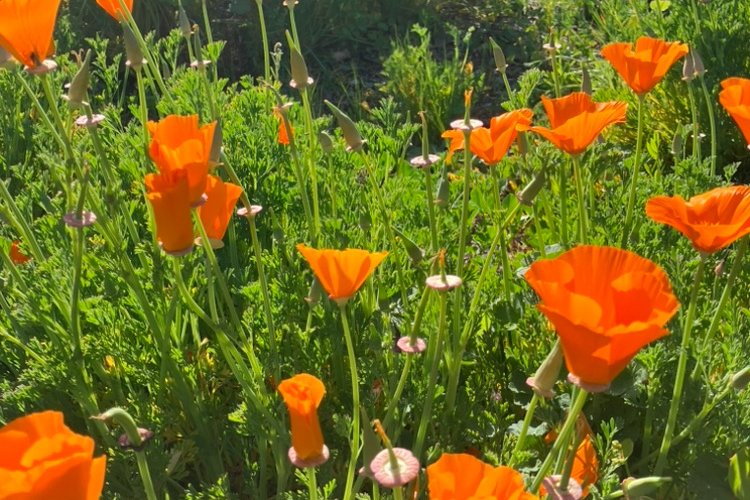
Members of the Arboretum and Botanical Garden at Cal State Fullerton were recently invited to spend a “morning in the meadow” with arboretum horticulturist Mars Jordan.
“I know a lot of people aren’t crazy about grasses but they serve a purpose in meadows and the creatures who live in meadows depend on them,” Jordan told the group.
In addition, grasses, with their extensive root systems, prevent erosion and provide needed carbon.
“There are many types of grasses,” Jordan explained. “There are grasslands referred to as pure strands of certain species or mixed strands. In the wild, these could include pure and mixed grasslands species such as needlegrasses, fescue, junegrass and oatgrasses. In our local areas, we see a lot of Nassella, or needlegrass, dominated strands. In the wet lands, you’ll see more sedges.”
In the meadow garden at the Arboretum and Botanical Garden, visitors can see a variety of grasses including coastal scrubgrasses, needlegrasses and more. California melic or purple three-awn are also great ornamental grasses. Purple three-awn doesn’t have a period of dormancy.
“Many people are using natural grasses as lawn replacements,” said Jordan. “But keep in mind that some grasses, such as blue-eye grass — a small purple flower in the iris family — isn’t particularly good for lawns. It has a dormancy period so for several months of the year, even with irrigation, it’ll look like it’s dead. It isn’t, but if you don’t want that look, don’t plant that species.”
Popular meadow grasses for yards include sedges; Festuca rubra “Molate,” which is the molate cultivar of red fescue; grant wild rye, which is big and unruly with a more natural look; and blue-eyed grass, which experiences periods of dormancy. Blue grama and a native California brome with a yellow anther also grows well in Orange County. However, there are many invasive bromes, and homeowners would be wise to carefully source these plants.
Jordan cautioned that with natural grasses, expect weeds. Regular weeding may be required to keep it under control.
Beyond grasses, the meadow also hosts bulbs such as soap lilies and blue irises; sand asters; blue dick, which is edible and sprouts purple and blue flowers; and common golden star, which has bright yellow flowers. Gooseberry bushes are native and attract pollinators. Butterflies are attracted to white, pink or yellow yarrow. Miner’s lettuce and the common gum plant are native to meadowlands.
California fescue, hummingbird sage, California sweet grass and penstemon with showy purple flowers also tend to do well.
Jordan also advises those who are considering a meadow for their yards to keep in mind that many of these plants are aggressive and can reach heights of several feet. That said, they can easily be cut back if needed.
Many of the plants shown in the meadow garden can be purchased at the Arboretum and Botanical Garden at Cal State Fullerton. Visit The arboretum website to learn more about online and in-person plant sales.